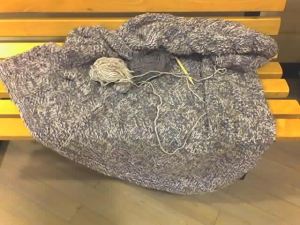Originally posted at Firedoglake.com for “Pull Up A Chair” on November 13, 2010.
This is how I make butternut squash soup…
First, I turn on the oven to preheat to 350 or so. You could use a higher temperature, if you like, and if you want to save time. Next, I cover a baking sheet with aluminum foil so that the squash doesn’t stick, and to make cleaning up easier. I pour some olive oil on the baking sheet and spread it around.
Then I cut the butternut squash up into slices and put them on the baking sheet. Those that have two cut sides, I turn over, so that both sides are coated with oil. Be careful when trying to cut up the squash, so that you don’t hurt yourself. You could roast some other vegetables to include in the soup… I don’t, because I just love the taste of the butternut squash when it is solo.
I roast the squash until it smells too good to leave in the oven any longer. Giving a definite time here is complicated, but I would estimate 45 minutes to an hour, perhaps longer if you’re roasting more squash, or if you have cut it into larger pieces. Frankly, I think the nose is often overlooked as a primary tool for knowing when something is done. Of course, using a fork to test for tenderness would not be amiss, but clearly my nose knows when the caramelizing process is completed.
After the squash comes out of the oven, I let it cool a little bit, so that I don’t blister my fingers when I’m scooping out the flesh. Usually, I’ll use a knife and a spoon, the knife for cutting the skin and the spoon for removing the flesh, but usually my fingers get involved, too. One could peel the squash first, but this way seems to save time. Still, this is the step that takes the longest, but probably not more than ten minutes or so.
Next, I put all of the butternut squash flesh into a pot, add a cup or so of chicken or vegetable broth… depending on who I’ll be sharing it with, vegetarians or meat-eaters. Over low to medium heat, I heat it up and use my immersion blender to blend it all together. Then I add a good portion of almond milk and a smaller amount of coconut milk, both unsweetened, if possible, since they add fewer calories that way. Combined, they give the soup a velvety finish that I don’t think you could get with ordinary dairy milk, unless you use cream. Besides, coconut milk is very good for you, and your digestive and immune systems. Coconut milk contains medium-chain fatty acids, which are not stored as fat, but used for energy. For what it’s worth, I don’t buy it in a can. I either buy the unrefrigerated variety or the refrigerated version, both of which come in cartons. Finally, I add a small dash of cinnamon, a small dash of allspice, and a larger amount of nutmeg. The nutmeg is the real secret ingredient. (I’ve also made it with curry, which adds a bit of heat for those who prefer that warmth at the back of the throat.)
Then, I store it in those plastic containers with the screw-on lids, since they hold an appropriate amount for a single serving, and are less likely to pop off on the way to work. It’s easy to heat up in the micro-wave at work, in a large soup mug, though I don’t heat it up on full power. I know we already had a soup thread, but I didn’t get to include this one in the comments.
What do you like for comfort food on these cold, autumn days? Or, if you live in a warmer clime, what do you prepare instead?


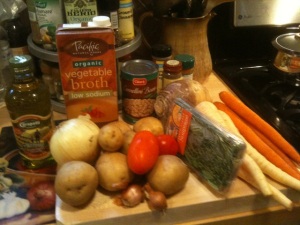
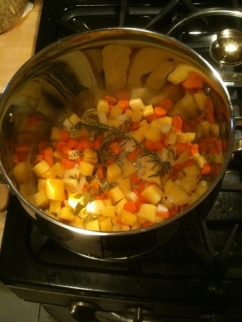
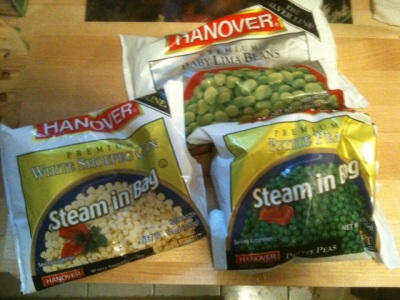

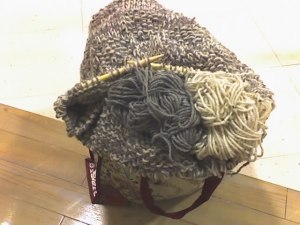 In the tote bag, you can more easily see the two colors of yarn that I’m blending by knitting with a strand of each. I love mixing colors this way, especially tweeds, which become even tweedier.
In the tote bag, you can more easily see the two colors of yarn that I’m blending by knitting with a strand of each. I love mixing colors this way, especially tweeds, which become even tweedier.